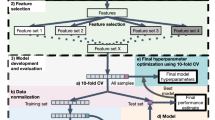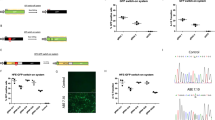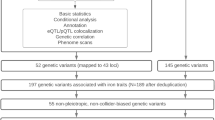Abstract
Purpose: To determine the contribution of the C282Y and H63D mutations in the HFE gene to clinical expression of hereditary hemochromatosis.
Methods: Pooled analysis of 14 case-control studies reporting HFE genotype data, to evaluate the association of different HFE genotypes with iron overload. In addition, we used data from the pooled analysis and published data to estimate the penetrance of the C282Y/C282Y genotype.
Results: Homozygosity for the C282Y mutation carried the largest risk for iron overload (OR = 4383, 95% Cl 1374 to >10,000) and accounted for the majority of hemochromatosis cases (attributable fraction (AF) = 0.73). Risks for other genotypes were much smaller: OR = 32 for genotype C282Y/H63D (95% Cl 18.5 to 55.4, AF = 0.06); OR = 5.7 for H63D/H63D (95% Cl 3.2 to 10.1, AF = 0.01); OR = 4.1 for C282Y heterozygosity (95% Cl 2.9 to 5.8, with heterogeneity in study results, making this association uncertain); and OR = 1.6 for H63D heterozygosity (95% Cl 1 to 2.6, AF = 0.03). Estimates of penetrance for the C282Y/C282Y genotype were highly sensitive to estimates of the prevalence of iron overload disease. At a prevalence of 2.5 per 1000 or less, penetrance of the C282Y/C282Y genotype is unlikely to exceed 50%. Penetrance of other HFE genotypes is much lower.
Conclusions: C282Y homozygosity confers the highest risk for iron overload but the H63D mutation is also associated with increased risk. Our data indicate a gradient of risk associated with different HFE genotypes and thus suggest the presence of other modifiers, either genetic or environmental, that contribute to the clinical expression of hemochromatosis.
Similar content being viewed by others
Article PDF
Author information
Authors and Affiliations
Corresponding author
Rights and permissions
About this article
Cite this article
Burke, W., Imperatore, G., McDonnell, S. et al. Contribution of different HFE genotypes to iron overload disease: a pooled analysis. Genet Med 2, 271–277 (2000). https://doi.org/10.1097/00125817-200009000-00001
Received:
Accepted:
Issue date:
DOI: https://doi.org/10.1097/00125817-200009000-00001
Keywords
This article is cited by
-
Hereditary hemochromatosis with homozygous C282Y HFE mutation: possible clinical model to assess effects of elevated reactive oxygen species on the development of cardiovascular disease
Molecular and Cellular Biochemistry (2023)
-
Transient elevation of serum ferritin in a Sri Lankan with homozygosity for H63D mutation in the HFE gene: a case report
Journal of Medical Case Reports (2020)
-
Evaluation of a screening program for iron overload andHFE mutations in 50,493 blood donors
Annals of Hematology (2020)
-
EMQN best practice guidelines for the molecular genetic diagnosis of hereditary hemochromatosis (HH)
European Journal of Human Genetics (2016)
-
Patient compliance based on genetic medicine: a literature review
Journal of Community Genetics (2014)



